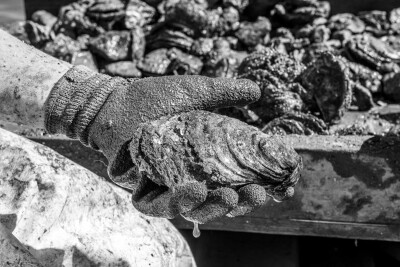If you ask around, the people really passionate about seafood and true sustainability (not just as a buzzword) will tell you the best way to eat fish is simply to eat what’s out there, don’t get too hung up on the top species because a recipe calls for cod, shrimp or salmon. If you ask Maine pollock jigging skipper Tim Rider what’s the best way to get people to eat what’s out there, he’ll say it’s all in the handling.
Onboard processing, premium chilling and ice products, bleeding machines and the top-tier payouts for well-handled fish is not a new concept in the fishing industry. Improvements to processing and handling onboard have spiked alongside growth in direct marketing efforts.
But between remote Bristol Bay boats installing raw seawater systems to improve quality (even on skiffs!) and a groundfish captain pulling up pollock one at a time and delicately processing each one in turn, it sure feels like we might be on the edge of an evolution in onboard processing for smaller boats and less recognized species.
Rider jigs for pollock in the Gulf of Maine. This (ahem) second-string groundfish is typically brought up from the water by way of a cod end. It’s a fine fish. I enjoy pollock, hake and in fact all the other landed groundfish that serve as afterthoughts to market seekers of cod and haddock. If not for the price difference, it’s possible I wouldn’t have tried them. But those are two things Rider is changing about pollock — its reputation as well as its price. That’s no easy feat, but Rider is not afraid to work around the clock to make it happen.
He and his crew deftly gut and bleed out their catch into ice-filled totes on deck. Because jigging doesn’t bring a lot of fish over the rail at once, the method allows them to handle the catch quickly and cleanly, and to use the time they might have spent sorting a mixed catch on processing instead. But it also means they’re not getting the advantage of bulk landings. What they lack in tows, they have to make up for in price as a result of quality.
Packing a five-man crew plus a NOAA observer onto his 36-footer, Rider pushes away from the dock, a man on a mission. And his next target is tuna. Read author Paul Molyneaux’s cover story starting on page 20.
On the opposite coast and the other end of the spectrum, the crew at Fred Wahl Marine Construction in Reedsport, Ore., is cranking out 58-footers as fast as they can sell them. The market is so strong for these powerhouse Super 8s, the yard starts building on spec any chance it gets, and figure the boat will sell before it’s ready to be finished out. So far, they’re right on the money. Read the story from Boats & Gear Editor Jean Paul Vellotti on page 24.
Whichever coast you’re on, look for NF staff at the New Bedford Working Waterfront Festival or the Fishermen’s Fall Festival at Seattle’s Fishermen’s Terminal, both on Sept. 23. See you there!







